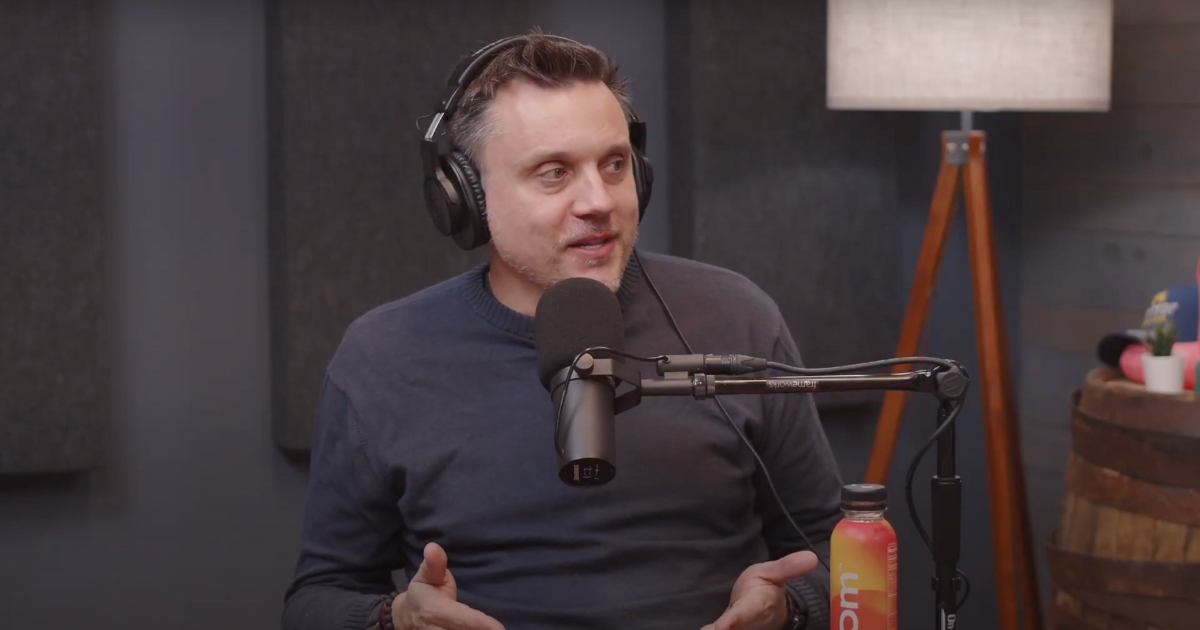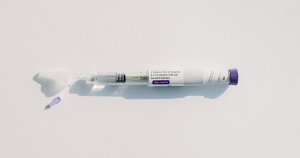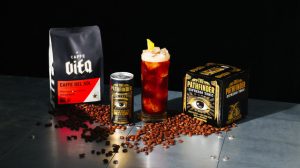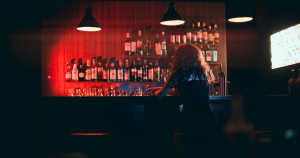The broader non-alcoholic beverage industry is evolving rapidly, and few have observed its trajectory as closely as John Craven, Founder and CEO of BevNET. In this interview, Craven reflects on BevNET’s early days, the rise of direct-to-consumer models, and how the retail landscape has shifted from convenience stores to grocery-first strategies. He shares his thoughts on the challenges alcohol alternative brands face in competing with giants like Guinness and Heineken, emphasizing the importance of innovation that doesn’t alienate consumers. Craven also explores the potential for THC beverages and the cultural shifts driving non-alc’s integration into the broader beverage market. Looking ahead, he predicts that non-alc products will become more normalized, complementing—rather than competing with—the traditional beverage industry.
Dry Atlas: John, you launched BevNET in 1996, which was very early for the internet itself. What inspired you to start an industry media company when the internet wasn’t widely adopted yet?
John Craven: In hindsight, maybe I should’ve started an online bookseller or a social media platform! At the time, I was a Computer Science student, and just figuring out how to get on the internet was a challenge. Things we take for granted today—like registering a domain name or setting up a basic website—were much harder back then.
For some reason, the beverage industry caught my interest. Growing up on Long Island, brands like Snapple and Arizona were huge. They seemed fun and exciting. So, I started a website about beverages—it was essentially a blog before blogs were even a thing. Over time, it grew into a publishing business, although there wasn’t much of a plan at first.
The first decade was all about experimenting. Eventually, we acquired a print magazine from another publisher transitioning to digital, which helped us expand. What you see today is the result of organic growth and a team passionate about the industry. It’s a dynamic space, always evolving. I couldn’t have imagined back then that we’d one day be talking about things like non-alcoholic beverages as a major trend.
DA: Indeed! Let’s fast-forward to the early 2010s, when beverage brands started using Shopify and selling direct-to-consumer (DTC). What were your thoughts as that trend emerged, especially given how challenging it is to distribute beverages online?
JC: It’s definitely tough. Back in 1998, I helped launch a site called Beverages Direct, which was one of the first attempts at e-commerce for beverages. So, I have some firsthand experience with how hard it can be.
DTC is great for controlling your own destiny—like testing new products, reaching early adopters, or shaping your narrative. But it’s hard to build a fully scalable business that way. The logistics of shipping beverages are complex and expensive.
That said, DTC can be a valuable tool for marketing and customer insights. Brands can engage with consumers across the country without overextending in retail. It’s not a perfect model, but it has its place in a broader strategy.
DA: Today, a lot of non-alc beverage brands dream of landing in Whole Foods or Target. How has the retail landscape evolved over the past 30 years?
JC: The retail landscape for beverages has undergone a massive transformation over the past three decades. When I started out, convenience stores and bodegas were the lifeblood of independent beverage brands. If you think about the corner stores in New York City or similar setups elsewhere, these small, independent shops were where emerging brands cut their teeth. Back then, even the idea of focusing on grocery chains like Whole Foods seemed too niche or small-scale for many investors. The thinking was that grocery didn’t have the volume to make it worthwhile, and convenience stores were seen as the golden ticket. It’s almost the reverse now. Today, brands are launching with a grocery-first strategy, and convenience stores are often something they expand into later as they scale.
That shift hasn’t been without its challenges, though. The economics of getting into big grocery chains like Whole Foods or Target are tough—there are listing fees, slotting fees, and the sheer complexity of dealing with these massive retailers. For emerging brands, the costs can be prohibitive. But there’s also a benefit to starting in grocery: it’s a more controlled environment for testing how your product performs in front of health-conscious, trend-savvy consumers. In contrast, convenience stores remain a great option for accessibility and volume, but they don’t always align with premium or health-forward branding. So, while the landscape has evolved to prioritize grocery, the economics and strategies behind getting on those shelves are a lot more nuanced than they used to be.
DA: Speaking of emerging brands, in non-alc they’re now competing with giants like Guinness and Heineken. What advice would you give to brands trying to survive and scale in such a competitive market?
JC: It’s tough because there’s no perfect path. What’s generally held true in CPG is that you want to be innovative—but not so innovative that consumers don’t understand your product. People are creatures of habit. The most successful brands often improve on what’s already out there rather than reinventing the wheel. Look at what Poppi has done, for example.
But it’s not easy to replicate the alcohol experience, if that’s what a brand is after. Beer has done it pretty well. Athletic Brewing and a slice of pizza tastes pretty good to me. Some categories are more behind than others, like non-alcoholic wine.
That means that the challenge is even greater in the alcohol alternatives space. Many of the big players are already making excellent products, like Guinness 0.0 or Heineken 0.0. Both are doing a phenomenal job globally. Smaller brands need to differentiate themselves through storytelling or by creating a craft experience. There’s room for variety. With products like these, consumers want optionality between, say, a Guinness and an Athletic Brewing and whatever else is out there.
DA: When non-alcoholic spirits, wines, and beers started to gain in popularity, what was your first impression?
JC: It was fascinating to watch the industry’s reaction. Athletic Brewing, for instance, is a great example. When they first came on the scene, there was a lot of skepticism—people saw it as just another trend that might fizzle out. But over time, Athletic became an industry darling, proving that there’s significant consumer interest in high-quality non-alcoholic options. It’s that classic case of something being dismissed as a “dumb idea” until it’s not.
As for non-alcoholic spirits, my early impressions were mixed. I’ve tried a lot over the years, and while some have gotten better in terms of flavor and usability, others felt more like an exercise in marketing than a product with true consumer appeal. For instance, Seedlip was groundbreaking in terms of introducing the category, but I’ve found it challenging to work with for home cocktails—it’s something I’d expect to see more in bars or restaurants than in people’s kitchens. What’s really exciting now is the rise of ready-to-drink non-alcoholic options. That’s where I think the category has started to hit its stride, offering more accessible and convenient formats for consumers.
DA: Do you think established soft drink brands getting into cocktail-inspired flavors, like Spindrift’s Cosmopolitan dupe, are a threat to non-alc native brands?
JC: That’s an interesting question. It really depends on the type of consumer we’re talking about and what motivates them. For some, these products might seem like a natural step—familiar brands creating something that feels adjacent to what they already know. If you’re someone who has enjoyed, say, Jack and Coke in the past, trying a non-alc Jack and Coke might feel intuitive. Established brands have the advantage of recognition and trust, which can make it easier for consumers to give their non-alc offerings a shot.
But at the same time, I wonder if these products truly resonate with younger consumers who are looking for something different. A lot of people entering the non-alc space aren’t necessarily looking for a replacement—they want something new that aligns with their lifestyle and values. They might be drawn to brands like Ghia or other products that stand apart from traditional alcohol and soft drinks entirely. In that sense, the big players may not be directly competing with non-alc native brands because they’re addressing slightly different consumer needs.
There’s also the broader question of whether moderation or abstinence is driving the category forward. If it’s about moderation, these big soft drink brands entering the space might appeal to consumers who still engage with alcohol occasionally but want an alternative. If it’s about abstinence, then products that feel wholly original—whether it’s a creative take like Ghia or something functional like a THC beverage—might lead the way. It’s a tricky space with a lot of unknowns, and it’s going to be interesting to see how this plays out.
DA: What are your thoughts on THC beverages? Regulatory challenges aside, do you think they’ll be a big player in the beverage space?
JC: THC beverages are intriguing, and I think their potential lies in the way they address the social aspect of drinking. In a setting where everyone has a glass or a can of something, it feels natural to have a beverage option that fits seamlessly into that environment. From that perspective, THC beverages have the ability to provide an experience that’s familiar yet distinct from alcohol. However, one of the biggest hurdles is consumer education and consistency. Historically, one milligram of THC in one product doesn’t necessarily mean the same thing in another. That lack of standardization has been a significant barrier, but the emergence of Delta-9 THC products seems to be addressing this issue. These products feel more akin to ABV labeling for alcohol, which is critical for consumer trust and usability.
That said, there’s still the question of who the core consumer is. Are THC beverages replacing alcohol for those seeking moderation or abstinence, or are they attracting a different audience entirely? There’s also the question of social acceptability. While cannabis has become more mainstream, there’s still a lingering stigma in some circles, and the idea of consuming THC at a social gathering might not yet feel as natural as having a beer or a glass of wine. Overcoming that requires not just great products but also a shift in cultural norms.
Assuming the regulatory landscape clears up, I do think THC beverages have significant potential. They offer something functional that consumers can understand—a clear effect, similar to alcohol. If the products are well-made and the dosing is consistent, I see a path forward for them. The challenge will be determining where they fit in the broader market. Are they replacing alcohol, carving out a new category, or doing a bit of both? There’s a lot of opportunity here, but it’s a space that’s still very much evolving.
DA: Looking ahead 10 years, how do you see the non-alc space evolving? Do you think it will remain a separate category or become more integrated with traditional beverages?
JC: It’s hard to predict with certainty, but I think the non-alc space will undergo significant transformation over the next decade. Right now, we’re in a phase where non-alc is largely seen as a separate category, almost a niche within the larger beverage landscape. This separation is partly driven by its novelty and the need for education around its value proposition. However, as the category matures, I suspect we’ll see it integrate more seamlessly with traditional beverages. Companies like Diageo and Heineken are already investing heavily in non-alc lines, and I imagine a future where these products sit side by side with alcoholic options in stores and on menus, normalized as part of a broader spectrum of choices rather than a distinct “alternative.”
That said, there are some hurdles to clear before this integration happens. One major challenge is perfecting the experience of non-alc products to match or complement their alcoholic counterparts. Consumers expect a certain quality and authenticity, and we’re still figuring out how to deliver that consistently across categories like non-alc spirits and wine. Additionally, the cultural shift toward moderation and mindful drinking will play a big role. If these trends continue to grow, non-alc products could evolve from being viewed as substitutes to being seen as equally viable options for different occasions. Whether it’s the bartender mixing a non-alc cocktail with the same care as a traditional one or a retailer dedicating equal shelf space to both, I think the future of non-alc lies in its ability to complement, rather than compete with, the broader beverage industry.
For more from BevNET, sign up for their daily newsletter at bevnet.com/newsletter






